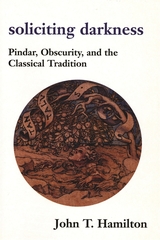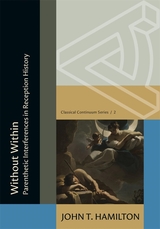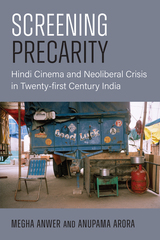
Hailed by Horace and Quintilian as the greatest of Greek lyric poets, Pindar has always enjoyed a privileged position in the so-called classical tradition of the West. Given the intense difficulty of the poetry, however, Pindaric interpretation has forever grappled with the perplexing dilemma that one of the most influential poets of antiquity should prove to be so dark.
In discussing both poets and scholars from a broad historical span, with special emphasis on the German legacy of genius, Soliciting Darkness investigates how Pindar’s obscurity has been perceived and confronted, extorted and exploited. As such, this study addresses a variety of pressing issues, including the recovery and appropriation of classical texts, problems of translation, representations of lyric authenticity, and the possibility or impossibility of a continuous literary tradition. The poetics of obscurity that emerges here suggests that taking Pindar to be an incomprehensible poet may not simply be the result of an insufficient or false reading, but rather may serve as a wholly adequate judgment.

Classical reception has always implied a parenthetical relationship insofar as Antiquity appears to be inserted into (en) while remaining alongside (para) Modernity. As in any parenthetical statement, the ancient source can be said to be a part of and apart from modern revisions and reworkings, recontextualizations and reorientations, belonging to a present discourse by maintaining its status beyond it. Through this rhetorical figure, Without Within broaches fresh questions and offers new lines of inquiry in the ever-growing and disparate field of Reception Studies, a field that itself continues to occupy an intriguingly ambivalent position within Classical Studies overall: simultaneously inside and outside, profane and sacred, an included exclusion.
As Quintilian defines it, a parenthesis is a figure of thought (figura sententiae) that occurs “when some thought in the middle interrupts [intervenit] the continuation of a discourse” (Inst. orat. 9, 3.23). In modern typography, this interruption or intervention is generally marked by brackets which introduce a further element of difference or heteronomy vis-à-vis the body of the text. As for specific cases of classical reception, a contrast is thereby staged between the essence of the ancient material and its modern purpose, between the what-is and the what-for. By investigating a series of exemplary instances of reception across several epochs, languages, and cultures, Hamilton aims to delineate and assess the varying contours of Antiquity’s challenge to Modernity and vice versa. What strategies of inclusion and exclusion are operative, and how might they be evaluated? What are the theoretical implications of considering the received past as both external and internal to the present day? How might we qualify the disruption and/or relevance of the past in modern contexts?
READERS
Browse our collection.
PUBLISHERS
See BiblioVault's publisher services.
STUDENT SERVICES
Files for college accessibility offices.
UChicago Accessibility Resources
home | accessibility | search | about | contact us
BiblioVault ® 2001 - 2025
The University of Chicago Press









